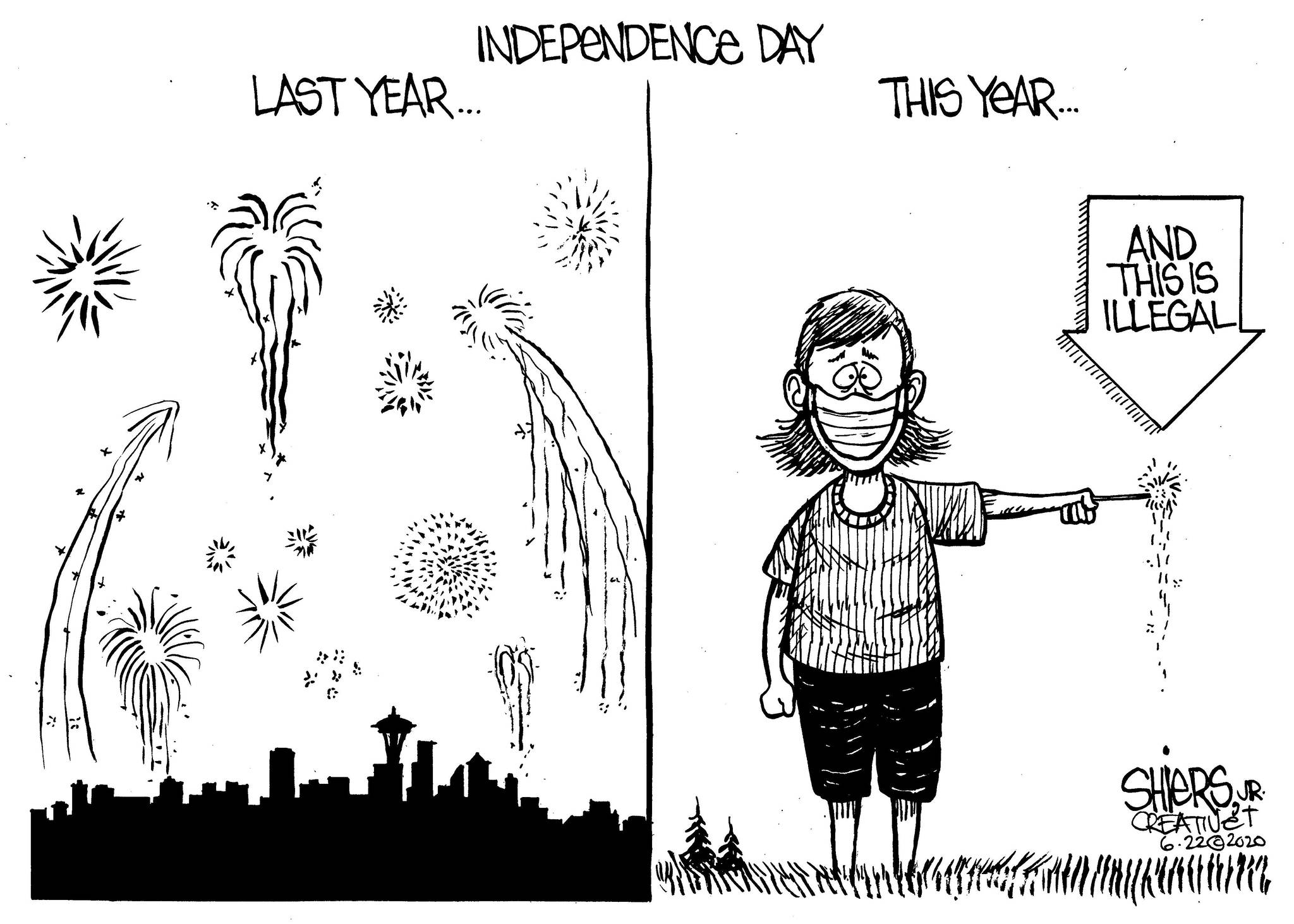Most of us know friends or family members who, following a cancer diagnosis, have taken on that fight with the personal determination necessary to gut through surgery, chemotherapy and radiation treatments to rid their bodies of a potentially fatal disease.
It’s a fight that can be devastating to body and spirit in the short term — one that demands personal sacrifices and indignities — but offers hope for health and return to a more normal life.
With infection rates for the coronavirus that causes COVID-19 rising in some U.S. states or at best declining only slowly in Washington and other states, we now need to show similar determination to take the steps necessary — and accept a few sacrifices and mild indignities — to slow the disease’s spread in our community and protect the lives of everyone with whom we come into contact, from loved ones to passersby.
That’s especially true now as we try to confront a stubborn infection at the same time we are attempting, slowly, to reopen our economy and resume many activities.
You know what’s coming: That means we need to wear face masks or other coverings when in public, wash or sanitize hands frequently and keep at least six feet of distance between ourselves and others when out in public.
But there’s another expectation with which most of us might not be familiar, and it relates to the efforts of public health officials to test for the virus, trace the contacts of those with confirmed positive COVID tests, and then isolate from the rest of the public those who are infected or have been exposed to the virus.
We should have the mask, hygiene and distance stuff down pat by now. Many do, but a trip to the grocery or hardware store or to a local park or beach on a sunny day — and we’re happily seeing more of those now — should provide enough evidence that not enough of us are either wearing masks inside grocery stores and other retail shops or keeping the necessary distance outdoors.
And that, no doubt, played into Gov. Jay Inslee’s order earlier this week that now mandates — with a few exceptions — the wearing of masks when in public. The order, which took effect today, requires face coverings when entering businesses, allowing them to be removed once seated at a restaurant, for example.
The evidence, if anecdotal, is still overwhelming that widespread use of masks has been effective in reducing community transmission of the COVID-19 virus, particularly in limiting infectious droplets from a cough or sneeze by someone who may not be showing other symptoms of COVID.
Updates to the charts published by the University of Washington’s Institute for Health Metrics and Evaluation now estimate the number of lives that could be saved with “universal use” of masks when in public.
Currently, if trends continue, Washington state can expect more than 1,900 deaths from COVID-19 by Oct. 1. With greater use of face coverings, that count could be eased to save nearly 400 lives in this state, flattening out to about 1,550 deaths. At a national level, the comparison is even starker: IHME now projects more than 179,000 U.S. deaths from COVID-19 by Oct. 1; use of masks could hold that figure to a little more than 146,000, potentially saving more than 33,000 American lives.
Along with a stronger commitment to masks, hygiene and physical distance, the general public also can maximize the work now being undertaken to test for COVID-19, trace the personal contacts of those infected and temporarily isolate those who otherwise could spread the disease.
Facilities and supplies for COVID testing in this county are getting closer to levels hoped for by Snohomish Health District officials, Heather Thomas, public affairs manager for the district said this week. This district is now testing about 25 to 30 people for every positive case and hopes to increase that to 50 tests soon.
Likewise, the health district is making final hires for a team of some 50 or more contact tracers, who will reach out to those who may have had close contact with those who have tested positive, to review their current health and possible symptoms, determine if a test is needed and whether that person needs to isolate.
As with wearing masks, getting people to respond to inquiries from the health district can be hit or miss. About half of those contacted, Thomas said, are not responding to requests to answer questions related to their health.
The conversations are usually brief, though can take up to 20 minutes if the respondent has questions. Respondents are asked to provide basic contact information and answer questions related to their general health. Periodic follow-ups can be done by text message. The responses are kept confidential and do not request information regarding Social Security numbers or proof of residence or citizenship, Thomas said.
Certainly, most don’t relish the prospect of quarantine. People are asked to stay home while waiting for test results and to quarantine if the result is positive or the person has had close contact with a confirmed case. It can take up to 14 days after exposure for symptoms to develop, and isolation can be necessary for several days after symptoms have cleared. Isolation can be done at home, but facilities are available if needed.
But, if the community spread of COVID-19 is to be limited — and lives saved — the responses to contact tracers are vital to identifying those who have the disease or may have been exposed; and isolation can ensure the disease is not spread further.
We are being asked to bear some discomfort and inconvenience in wearing a mask. Still others will have to make the sacrifice of answering questions and isolating themselves. But in following those directives — even if you never know who — you may have saved someone’s life.
By The Herald (Everett) editorial board.


